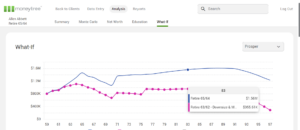Buying new software is a big investment, but with so many options, it can get overwhelming quickly. In fact, according to Capterra’s 2022 SMB Tech Trends Survey, 61% of small and medium businesses in the US have experienced buyer’s remorse over a technology purchase they made in the past year.
It’s tough to know what you are looking for. Here are questions you can ask to simplify the complicated buying process.
What problem is this solving?
It’s easy to be dazzled by impressive features and eye-catching design of many solutions. A few years ago, I was looking for an app I could use to track my workout progress. Like anyone would, I chose the app that had the most modern look, could connect me to friends, and provide badges for checking in. However, once I started using the app, I learned that I had to buy a different package to do the very thing I had set out to do: track my workout progress. I had gotten distracted by extra features, and I lost sight of what problem I wanted the app to solve.
I have a feeling I’m not alone; how many of us have gotten so excited by bells and whistles, we lost sight of the problem we wanted a solution to solve? Buying financial planning software is no different. It will help to make a list of the problems you want to solve in simple language. For example, you might say, “I want my financial planning software to help me communicate with clients by showing them a simple, one-page summary.”
After you have made a list of what you want your software to do, you are armed with the list of what the right software will do for you. When you have your list of requirements in front of you, instead of buying a series of solutions that each specialize in each area, you can choose fewer solutions that fit better and solve more problems, saving you money – but also saving time, which leads to the second important question to ask when buying software.
How will this relate to the software I have?
There are so many solutions designed to help make you efficient in specific ways, it is easy to grow a large collection of solutions without even realizing it. Before you know it, you have a bloated tech stack, and it feels like you spend more time administering software and swiveling your chair from solution to solution than you get to spend actually connecting with your clients.
To counteract this, it is important to look for solutions that integrate with other software that you already have. Many solutions provide easy integrations using APIs, meaning that you only enter your data once, and all the solutions in your ecosystem talk to each other, making the experience seamless.
What will this mean for my security?
As an advisor, you have access to some of your clients’ most sensitive data – personally identifiable information (PII). A data breach could greatly damage your clients’ lives and in turn, your reputation. It is key to make sure any software you purchase holds security to the highest standard. Ask your prospective software vendor where their data is stored and if offshore developers or support technicians will have access to PII.
A great way to learn about data and security practices is to ask to see the company’s SOC 2 report. This is an evaluation of information security practices performed by an outside auditor. As a result, you know the evaluation is objective because the auditors have no stake in the company. Be certain you read the report. Some vendors will supply SOC 2 reports belonging to ancillary components of the software itself. In other words, they will provide a report showing one of their partners (such as a hosting service) is SOC 2 certified, without providing information about the coding practices or data protection in the core software you are evaluating.
What if I change my mind about using this software?
To prevent buyers’ remorse, always get a free trial. You would not buy a car without taking a test drive. Your software purchase should not be any different! If the vendor will not let you trial the software (or even worse, tries to lock you into a multiyear contract), you must be extremely certain you want to use their product. A better question is, why not take advantage of a free trial? The presence of a free trial indicates that the vendor stands behind the quality of their product, and likely will be quick to support you, ensuring your experience with their solution is optimal.
A free trial is also a great opportunity to explore the company’s support services. By contacting support and/or submitting a support ticket, you will quickly learn what level of service you can expect. It’s a great way to learn if their support team is friendly and helpful before you find yourself in dire need.
In short, the best tech stack is the one you don’t notice on a daily basis. If you purchase with these questions in mind, you can keep your tech stack light, making you more efficient and improving your client relationships. With a software solution you can trust, you can be more confident to trust your plan.




